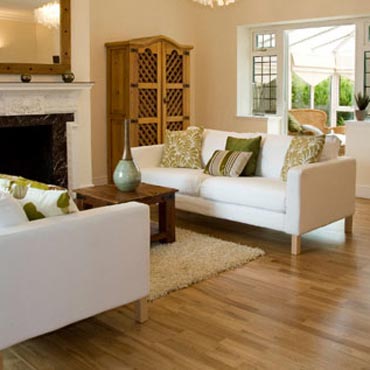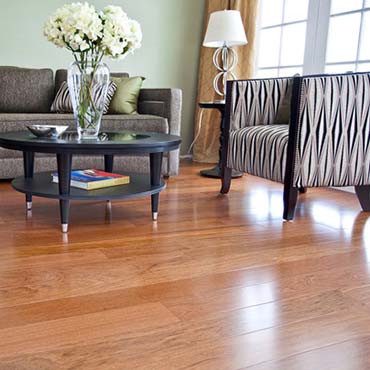Engineered Hardwood Flooring

Elegant, Versatile, and Durable: Engineered Wood Flooring for Designers
Introduction
Imagine a flooring material that captures the timeless beauty of
hardwood but provides enhanced durability, stability, and design flexibility. Engineered wood flooring delivers just that—a fusion of style and practicality. For interior designers and decorators who seek to combine form and function, this product opens up a world of possibilities. Whether you're crafting a modern masterpiece or curating a traditional interior, engineered wood offers the sophistication and versatility to elevate any space.
What is Engineered Wood Flooring?
Engineered wood flooring is an innovative alternative to traditional hardwood, meticulously constructed for beauty and resilience. Comprising multiple layers, it features a genuine hardwood veneer atop a core of high-density fiberboard (HDF) or plywood, all finished with a stabilizing backing layer. This layered composition ensures that the flooring can withstand changes in temperature and humidity without the risk of warping or swelling, making it a superior choice for both residential and commercial projects.
Types of Engineered Wood Flooring: Plank, Longstrip, and Parquet
- Engineered Plank Flooring offers the classic hardwood look with the practicality of engineered construction. With wider and longer boards, it brings elegance and continuity to open spaces, enhancing the sense of flow in a room. Interior designers appreciate its ability to be installed over radiant heating systems, making it perfect for modern, energy-efficient homes.
- Engineered Longstrip Flooring takes versatility a step further. This flooring consists of strips that mimic traditional wood patterns but offer greater adaptability for complex designs. Its ability to be installed over various subfloors, including concrete, ensures that it meets the demands of urban or commercial spaces.
- Engineered Parquet Flooring brings a touch of artistry to your projects. Known for its geometric patterns and timeless appeal, parquet adds visual interest to any room. Its engineered construction ensures that intricate designs can withstand the rigors of everyday life, making it a perfect choice for high-traffic areas.
Features and Benefits for Interior Designers and Decorators
Engineered wood flooring stands out due to its balance of beauty, durability, and versatility. For interior designers and decorators, this means:
- Aesthetic Versatility: Available in a wide array of species, finishes, and colors, engineered wood flooring complements a range of styles from rustic to modern. The top veneer layer allows you to harness the elegance of oak, walnut, or even exotic woods while maintaining the resilience of engineered construction.
- Durability and Stability: Engineered wood flooring resists warping, swelling, or shrinking, making it suitable for areas exposed to temperature fluctuations or humidity. This ensures that your designs remain intact in diverse environments, from living rooms to offices.
- Customizable Options: With multiple finish and size options, engineered wood can be customized to meet specific design needs. Its flexibility allows you to curate unique flooring solutions that align with your client’s vision.
- Eco-Friendly Choice: Many engineered wood products are sourced from sustainable forests and use less wood than traditional hardwood, making it a more sustainable option. As designers and decorators increasingly prioritize sustainability, engineered wood fits into eco-conscious designs.
Why Engineered Wood Flooring Stands Out
In a market flooded with flooring options, engineered wood flooring distinguishes itself by merging traditional hardwood appeal with modern innovation. The layered construction significantly reduces the likelihood of imperfections that plague solid wood, such as warping or cupping. Additionally, its compatibility with underfloor heating and ease of installation make it a forward-thinking solution for contemporary spaces.
When compared to solid hardwood, engineered wood flooring provides exceptional value—offering the same beauty at a more accessible price point. Its longevity and low-maintenance characteristics further elevate it as a premier choice for professional interior projects.
Ideal Rooms for Engineered Wood Flooring
Engineered wood flooring is highly adaptable and can be installed in nearly any room. Its moisture resistance makes it suitable for areas that are problematic for solid hardwood, such as
kitchens or basements. However, it truly shines in living rooms,
dining rooms, and
bedrooms—spaces where designers can showcase the flooring's natural beauty while benefiting from its durability.
Conclusion: A Flooring Solution to Inspire Creativity
For interior designers and decorators, engineered wood flooring offers the perfect canvas for creativity. Its blend of form and function not only meets the aesthetic needs of your clients but also delivers practical advantages that enhance your designs' longevity. Whether you are seeking a sustainable option or a luxurious hardwood alternative, engineered wood has the versatility to fit any project.
Explore the possibilities with engineered wood flooring, and let it be the foundation of your next great design.
Disclaimer: The information provided in this article is for general informational purposes only. While we strive to ensure the accuracy and reliability of the information presented, we make no warranties, express or implied, about the completeness, accuracy, reliability, suitability, or availability with respect to the content. Any reliance you place on such information is strictly at your own risk. We recommend consulting with professionals for specific advice tailored to your project’s needs, particularly regarding building codes, regulations, and product specifications.
Under no circumstances shall we be liable for any loss or damage, including without limitation, indirect or consequential loss or damage, arising from the use of, or reliance on, the information provided in this article.










